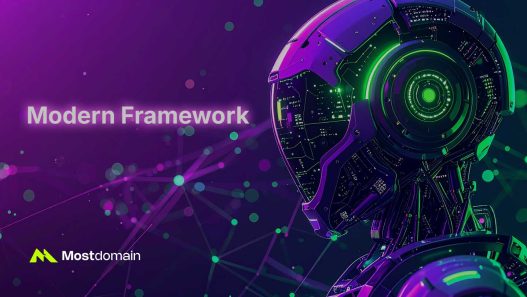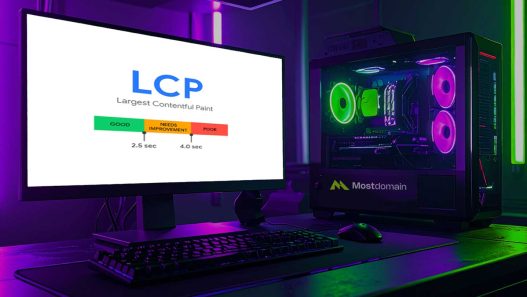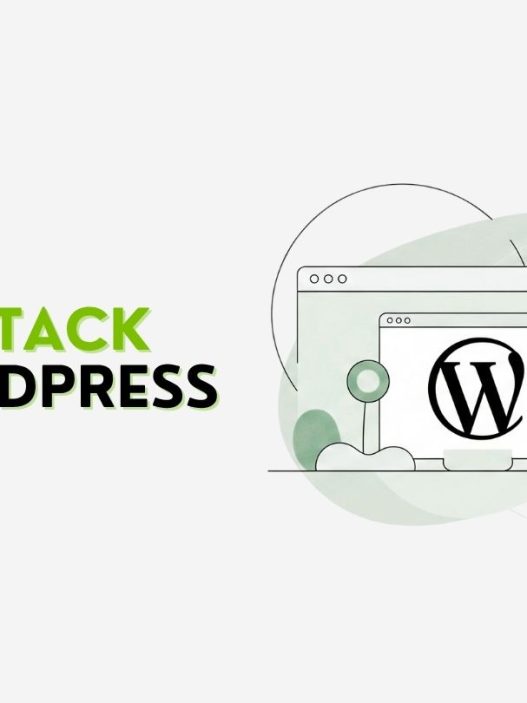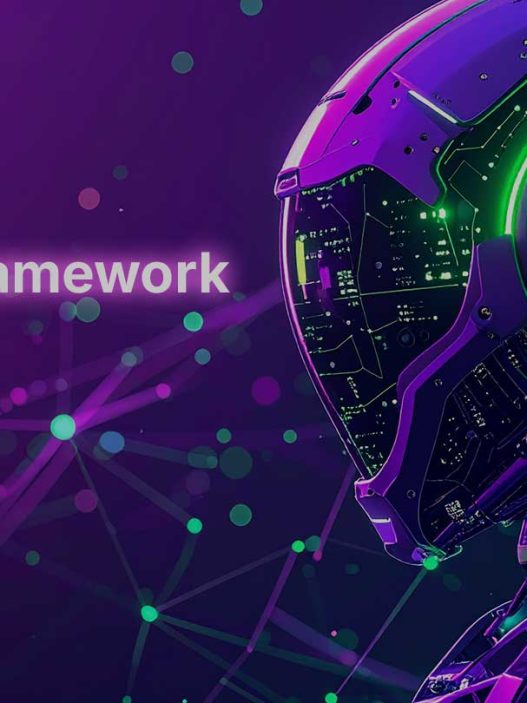The programming landscape is experiencing its most dramatic transformation since the dawn of the internet age. With artificial intelligence reshaping entire industries and cloud computing becoming the new standard, the question isn’t whether you should learn to code—it’s which programming language will give you the competitive edge in 2025.
Recent industry surveys reveal that 72% of developers believe staying updated with the latest programming languages trends 2025 is crucial for career advancement. Meanwhile, Python has surged with an impressive 8.72% increase in popularity ratings, solidifying its position as the most popular programming languages leader.
This comprehensive guide examines the top programming languages to learn 2025, backed by real-world data from major industry reports including Stack Overflow’s Developer Survey, GitHub’s Octoverse Report, and the TIOBE Programming Community Index. Whether you’re a complete beginner or an experienced developer looking to expand your skill set, this roadmap will help you make informed decisions about your programming journey.
The 15 Best Programming Languages for 2025:
| Rank | Language | Primary Use | Difficulty | Salary Potential |
| 1 | Python | AI/Data Science | Beginner | $95K-$140K |
| 2 | JavaScript | Web Development | Beginner | $85K-$130K |
| 3 | Java | Enterprise | Intermediate | $80K-$125K |
| 4 | TypeScript | Large Web Apps | Intermediate | $85K-$125K |
| 5 | C++ | Systems/Games | Advanced | $90K-$135K |
| 6 | Rust | Systems Security | Advanced | $100K-$150K |
| 7 | Go | Cloud/DevOps | Intermediate | $105K-$155K |
| 8 | C# | Microsoft Stack | Intermediate | $80K-$120K |
| 9 | Swift | iOS Development | Intermediate | $90K-$135K |
| 10 | Kotlin | Android Development | Intermediate | $85K-$130K |
| 11 | PHP | Web Development | Beginner | $65K-$95K |
| 12 | R | Data Analysis | Intermediate | $75K-$115K |
| 13 | Dart | Cross-Platform | Intermediate | $70K-$110K |
| 14 | Scala | Big Data | Advanced | $110K-$165K |
| 15 | SQL | Database Management | Beginner | $60K-$100K |
Why Do Programming Languages Matter More Than Ever in 2025?
The digital revolution has reached a tipping point where programming skills are no longer optional—they’re essential for career survival and growth. The rise of artificial intelligence, machine learning, and automation has created unprecedented demand for skilled developers across virtually every industry.
Companies are rushing to adopt AI technologies, with global AI market spending projected to exceed $500 billion by 2025. This massive shift has elevated certain programming languages for AI to critical importance, particularly those with robust data science and machine learning libraries like Python and R.
The job market reflects this urgency. LinkedIn reports over 15 million programming-related job postings globally, with salaries ranging from $75,000 for entry-level positions to $200,000+ for senior developers specializing in highest paying programming languages. The key is choosing languages that align with both current market demands and future technological trends.
1. What Makes Python the Undisputed Champion of 2025?
Python’s dominance in 2025 stems from its perfect storm of simplicity, versatility, and powerful ecosystem. Its syntax resembles natural English, making it the most beginner friendly programming languages option while remaining sophisticated enough for complex enterprise applications.
The language’s extensive library ecosystem includes TensorFlow and PyTorch for machine learning, Pandas for data manipulation, and NumPy for scientific computing. This makes Python indispensable for the booming fields of AI development and data science careers.
Key Python Applications:
- ✓ Artificial Intelligence and Machine Learning
- ✓ Data Science and Analytics
- ✓ Web Development (Django, Flask)
- ✓ Automation and Scripting
- ✓ Scientific Computing
| Metric | Python Performance |
| Job Availability | 4.2M+ positions globally |
| Average Salary | $95,000 – $140,000 |
| Learning Curve | Beginner-friendly |
| Market Growth | +8.72% (2024-2025) |
2. Is JavaScript Still Worth Learning Despite All the Hype?
JavaScript continues to prove its critics wrong by maintaining its position as the backbone of modern web development. With 98% of websites using JavaScript in some capacity, it remains one of the most in-demand programming skills in the job market.
The language has evolved far beyond simple webpage interactions. Modern JavaScript powers full-stack applications through Node.js, enables mobile app development via React Native, and even supports desktop applications through Electron. This versatility makes JavaScript developers highly valuable across multiple platforms and industries.
JavaScript’s 2025 Strengths:
- ✓ Universal web compatibility
- ✓ Massive community support
- ✓ Rapid development cycles
- ✓ Extensive framework ecosystem
- ✓ High job market demand
Industry Insight: “JavaScript remains the most popular programming language among developers for the 11th consecutive year, with 62% of survey respondents reporting active usage.” – Stack Overflow Developer Survey 2024
3. Java: Why Enterprise Giants Still Can’t Live Without It?
Java’s enduring popularity in enterprise environments stems from its “write once, run anywhere” philosophy and rock-solid stability. Major corporations rely on Java for mission-critical applications that handle millions of transactions daily, creating consistent demand for skilled Java developers.
The language’s object-oriented architecture, automatic memory management, and extensive security features make it ideal for large-scale applications. Java’s ecosystem includes powerful frameworks like Spring Boot for microservices architecture and robust tools for cloud deployment.
| Java Market Position | Details |
| Enterprise Usage | 85% of Fortune 500 companies |
| Job Security | Highest among all languages |
| Average Salary | $85,000 – $125,000 |
| Learning Investment | Medium to High |
4. TypeScript: The JavaScript Evolution You Need to Know
TypeScript has emerged as JavaScript’s sophisticated evolution, adding static typing and enhanced tooling to the dynamic JavaScript ecosystem. Major companies like Microsoft, Slack, and Airbnb have adopted TypeScript for large-scale applications, driving its popularity among enterprise developers.
The language’s static typing system catches errors during development rather than runtime, significantly improving code quality and maintainability. TypeScript’s seamless integration with existing JavaScript projects makes adoption relatively painless for teams looking to upgrade their development practices.
TypeScript Advantages:
- ✓ Enhanced code reliability
- ✓ Better IDE support and autocomplete
- ✓ Easier refactoring for large codebases
- ✓ Strong community adoption
- ✓ Excellent Angular integration
5. Why Is C++ Leading the Performance Revolution?
The resurgence of system programming languages like C++ reflects the industry’s growing focus on performance, security, and efficiency. As applications become more complex and data-intensive, the need for languages that provide fine-grained control over system resources has intensified.
C++ remains crucial for game development, real-time systems, and high-frequency trading applications where milliseconds matter. Its unrivaled performance and extensive library ecosystem make it irreplaceable for performance-critical applications.
6. Rust: The Modern Systems Programming Alternative
Rust offers a modern alternative with memory safety guarantees and fearless concurrency. Mozilla’s creation has gained significant traction in blockchain development, web assembly, and system programming where security is paramount.
7. What Role Does Go Play in Cloud-Native Development?
Go (Golang) has become synonymous with modern cloud infrastructure and microservices architecture. Google designed Go specifically for the challenges of distributed systems, making it naturally suited for cloud-native applications.
The language’s built-in concurrency support, fast compilation times, and efficient resource usage have made it the backbone of many cloud platforms. Docker, Kubernetes, and numerous other cloud technologies are built with Go, creating strong demand for Go developers in DevOps and cloud computing roles.
Go’s Cloud Dominance:
- ✓ Container orchestration (Kubernetes)
- ✓ Microservices development
- ✓ API development and gateways
- ✓ DevOps tooling
- ✓ Distributed systems
| Go Performance Metrics | 2025 Data |
| GitHub Projects | 4.7M+ repositories |
| Job Market Growth | +12% year-over-year |
| Average Salary | $105,000 – $155,000 |
| Learning Difficulty | Medium |
8. C#: Still Microsoft’s Secret Weapon?
C# continues to thrive within Microsoft’s expansive ecosystem, powering everything from enterprise web applications to AAA video games. The language’s integration with the .NET framework provides developers with comprehensive tools for building scalable applications across multiple platforms.
Recent developments have expanded C#’s reach beyond Windows environments. .NET Core’s cross-platform capabilities and strong web development frameworks like ASP.NET make C# viable for diverse deployment scenarios.
9. Swift: Apple’s Modern Language for iOS Excellence
The mobile development landscape for iOS has been revolutionized by Swift, which has become the go-to choice for iOS development, offering modern syntax and excellent performance for Apple’s ecosystem.
Swift Key Features:
- ✓ Memory safety and performance
- ✓ Playgrounds for interactive learning
- ✓ Seamless Objective-C interoperability
- ✓ Growing server-side adoption
10. Kotlin: Google’s Preferred Choice for Android Development
For Android development, Kotlin has largely replaced Java as Google’s preferred language. Kotlin’s concise syntax, null safety features, and seamless Java interoperability make it an attractive choice for mobile developers.
Kotlin Advantages:
- ✓ 100% Java interoperability
- ✓ Reduced boilerplate code
- ✓ Null safety by design
- ✓ Coroutines for async programming
11. Is PHP Still Relevant for Web Development?
Despite predictions of its demise, PHP continues to power a significant portion of the web, including platforms like WordPress that run 40% of all websites. The language has evolved considerably with PHP 8.x introducing modern features like union types, attributes, and improved performance.
PHP’s enduring relevance stems from its simplicity, extensive hosting support, and massive ecosystem of frameworks and content management systems. For developers entering web development, PHP remains a practical choice with abundant job opportunities.
PHP 2025 Strengths:
- ✓ Massive web presence (75.6% of server-side websites)
- ✓ Easy deployment and hosting
- ✓ Rich framework ecosystem (Laravel, Symfony)
- ✓ WordPress development opportunities
- ✓ Rapid prototyping capabilities
12. How Important Is R for Data Science?
R remains the statistician’s language of choice, excelling in data analysis, visualization, and academic research. While Python has gained ground in machine learning, R maintains its stronghold in statistical modeling and advanced analytics.
The language’s extensive package ecosystem (CRAN) includes specialized tools for every statistical method imaginable. R’s ggplot2 library sets the gold standard for data visualization, making it indispensable for data analyst roles and research positions.
| R vs Python Comparison | R | Python |
| Statistical Analysis | Excellent | Good |
| Machine Learning | Good | Excellent |
| Data Visualization | Excellent | Good |
| Learning Curve | Steep | Moderate |
| Job Market | Specialized | Broad |
13. Why Is Dart Gaining Momentum in Cross-Platform Development?
Dart, Google’s programming language, has found its niche through the Flutter framework for cross-platform mobile development. Flutter’s ability to create native-performance apps for both iOS and Android from a single codebase has driven rapid adoption among businesses seeking development efficiency.
Dart’s sound type system, ahead-of-time compilation, and hot reload feature make it particularly attractive for mobile development teams. The language is expanding beyond mobile into web and desktop applications, positioning it as a versatile choice for cross-platform development.
14. What About Scala for Big Data Processing?
Scala combines object-oriented and functional programming paradigms, making it particularly suitable for distributed data processing. Its tight integration with Apache Spark has made it a favorite among big data engineers and financial technology companies.
The language’s concise syntax and strong type system help manage complex data transformations while maintaining code reliability. Scala developers command premium salaries, particularly in fintech and data-intensive industries.
15. How Critical Is SQL Knowledge Across All Roles?
SQL remains the universal language of data management, making it an essential skill regardless of your primary programming focus. With data becoming increasingly central to business operations, SQL proficiency is often a prerequisite for developer, analyst, and even product management positions.
Modern applications generate massive amounts of data that require efficient storage, retrieval, and analysis. SQL’s standardized syntax across different database systems makes it a valuable transferable skill that complements other programming languages.
SQL Applications Across Roles:
- ✓ Database design and optimization
- ✓ Business intelligence and reporting
- ✓ Data migration and ETL processes
- ✓ Application backend development
- ✓ Performance monitoring and analysis
Which Languages Offer the Highest Salary Potential?
Programming language salary potential varies significantly based on specialization, experience level, and geographic location. However, certain languages consistently command premium salaries due to their specialized applications and market demand.
Top-Paying Programming Languages 2025:
| Rank | Language | Average Salary Range | Primary Use Cases |
| 1 | Scala | $110,000 – $165,000 | Big Data, Finance |
| 2 | Go | $105,000 – $155,000 | Cloud, DevOps |
| 3 | Rust | $100,000 – $150,000 | Systems, Security |
| 4 | Python | $95,000 – $140,000 | AI, Data Science |
| 5 | Swift | $90,000 – $135,000 | iOS Development |
| 6 | Kotlin | $85,000 – $130,000 | Android Development |
| 7 | TypeScript | $85,000 – $125,000 | Enterprise Web |
| 8 | Java | $80,000 – $125,000 | Enterprise Backend |
Specialized skills within these languages can command even higher premiums. For example, Python developers with machine learning expertise or Go developers specializing in cloud architecture often exceed these salary ranges significantly.
How to Choose the Right Programming Language for Your Goals?

Selecting the optimal programming language depends on your career objectives, learning preferences, and target industry. Rather than chasing trends, focus on languages that align with your long-term professional goals and personal interests.
Decision Framework:
- Career Path Alignment – Match language to desired role
- Learning Style – Consider syntax complexity and resources
- Market Demand – Research job availability in your area
- Growth Potential – Evaluate language trajectory and ecosystem
- Community Support – Assess learning resources and help availability
Career-Specific Recommendations:
| Career Goal | Primary Language | Secondary Skills |
| Web Development | JavaScript | TypeScript, PHP |
| Mobile Apps | Swift/Kotlin | Dart (Flutter) |
| Data Science | Python | R, SQL |
| DevOps/Cloud | Go | Python, Shell |
| Game Development | C++ | C#, Rust |
| Enterprise Software | Java | C#, Scala |
Where Can You Find Quality Learning Resources?
The abundance of programming learning resources can be overwhelming for newcomers. Quality matters more than quantity—focus on comprehensive, up-to-date materials that include hands-on practice opportunities.
Structured Learning Paths:
- ✓ Interactive Platforms: Codecademy, FreeCodeCamp, Coursera
- ✓ Video Courses: Pluralsight, Udemy, edX
- ✓ Practice Platforms: LeetCode, HackerRank, Codewars
- ✓ Official Documentation: Language-specific docs, MDN Web Docs
- ✓ Community Forums: Stack Overflow, Reddit programming communities
Free vs. Paid Resources:
| Resource Type | Free Options | Paid Options |
| Video Tutorials | YouTube, freeCodeCamp | Pluralsight, Udemy |
| Interactive Coding | Codecademy (basic) | Codecademy Pro |
| Practice Problems | HackerRank (basic) | LeetCode Premium |
| Project-Based | GitHub repositories | Bootcamp programs |
Effective learning combines multiple resource types. Start with structured courses for foundations, use practice platforms for skill reinforcement, and engage with communities for problem-solving support and networking opportunities.
What’s the Optimal Learning Strategy for Beginners?
Recommended Learning Sequence:
Phase 1: Foundation (2-3 months)
- Choose Python as your first language
- Complete basic syntax and control structures
- Build 3-5 small projects (calculator, todo list, simple games)
Phase 2: Web Integration (2-3 months)
- Learn HTML/CSS fundamentals
- Add JavaScript for interactivity
- Create responsive web applications
Phase 3: Database Skills (1-2 months)
- Master SQL basics
- Understand database design principles
- Connect databases to applications
Phase 4: Specialization (3-6 months)
- Choose based on career interests:
- Data Science: Advanced Python + R
- Mobile Development: Swift/Kotlin or Flutter
- Backend Development: Java/Go + frameworks
- Frontend Development: Advanced JavaScript + frameworks
Learning Tip: “Build projects, not just tutorials. Every concept you learn should be applied in a practical project that you can showcase to potential employers.” – Senior Developer, Meta
Your Programming Journey Starts Here
The programming landscape of 2025 offers unprecedented opportunities for career growth and innovation. Whether you’re drawn to artificial intelligence with Python, web development with JavaScript, or cloud infrastructure with Go, the key is taking that crucial first step.
Remember that programming languages 2025 are tools—the problems you solve and value you create matter more than the specific syntax you use. Focus on building real projects, contributing to open-source initiatives, and continuously learning as technology evolves.
Action Steps for Success:
✓ Choose one language from this guide that excites you
✓ Commit to 1 hour of daily practice for 30 days
✓ Build a simple project in your first week
✓ Join relevant developer communities
✓ Set up a GitHub profile to showcase your work
The investment you make in programming skills today will compound over the coming years. Start with one language that excites you, master its fundamentals, and gradually expand your toolkit as opportunities arise. The future belongs to those who can bridge the gap between human needs and technological solutions.
References
- Stack Overflow Developer Survey 2024. Developer Survey Results.
- TIOBE Programming Community Index.
- GitHub Octoverse Report 2024. The State of Open Source Software.
- Pluralsight Technology Skills Report 2025. Top Programming Languages.
- GeeksforGeeks Programming Survey 2025. Future Programming Languages.
- SlashData Developer Economics Report Q1 2025. Global Developer Population.
- LinkedIn Workforce Report 2025. In-Demand Skills.
- ITTransition Programming Languages Analysis. Most In-Demand Programming Languages.





















